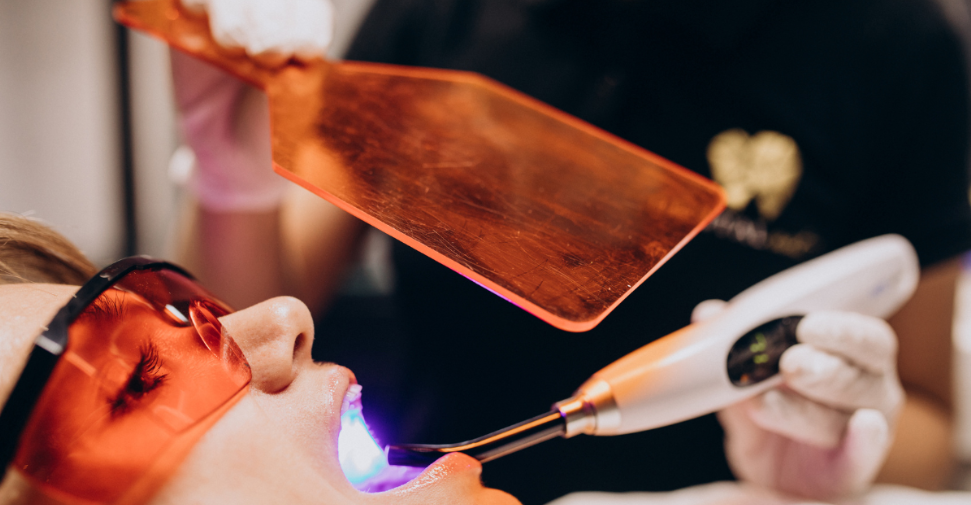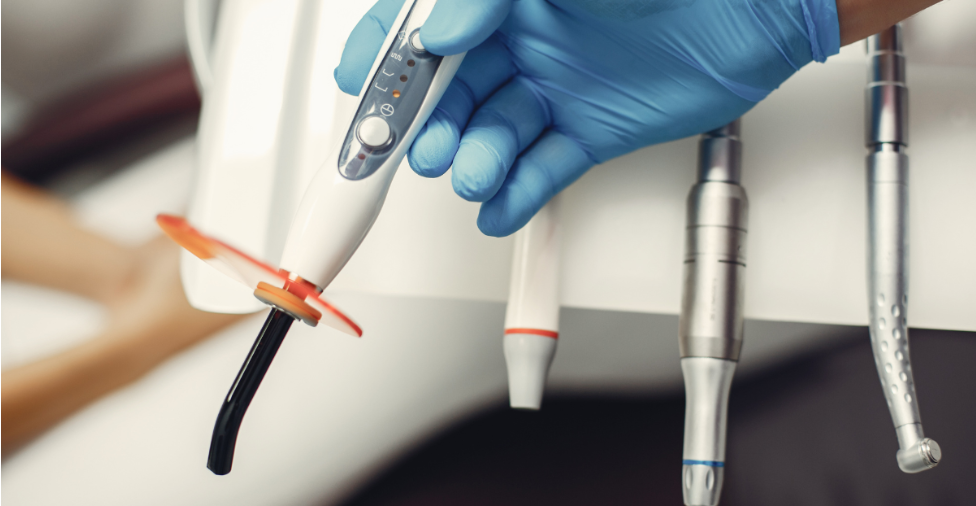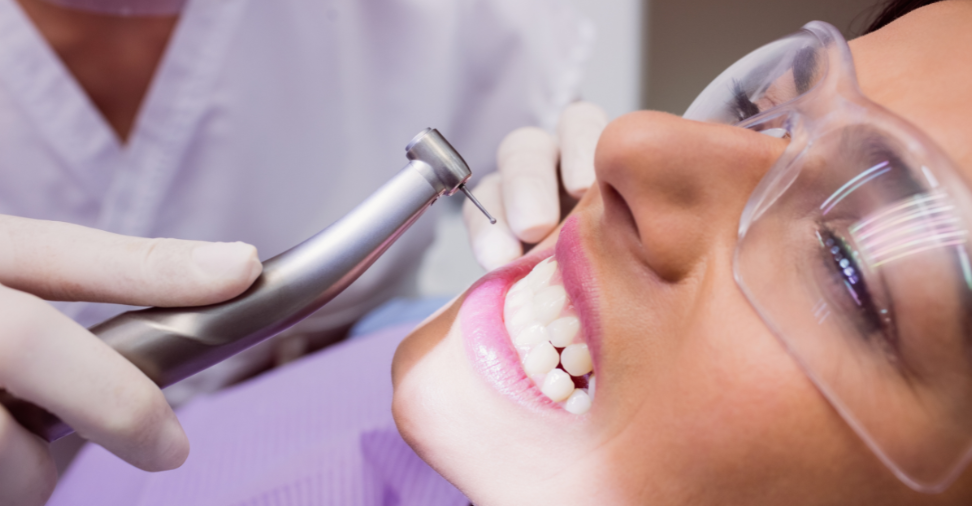
How Laser Dentistry Transforms Your Dental Experience: The Ultimate Guide
Dental technology has advanced considerably since the days of drills and scalpels. We are now in a position where patient comfort and precise treatment outcome have shaped the field into something we could have never envisaged. One of the most stunning developments in past years is laser dentistry. Laser dentistry has changed the game in traditional dentistry and made significant strides toward minimally-invasive methods with greater precision and quicker recovery. To help you better understand laser treatments and how this will listen to a dentist's advice about how it will transform your experience with dental care, we have written this comprehensive guide to laser dentistry to share why laser treatments are an alternative that dentists prefer for both restorative care and cosmetic care. There is a lot to unpack here, whether you're interested in learning more about the science, or you're mainly looking to understand the practical benefits this advanced technology offers. This ultimate guide about laser treatment for dental is a comprehensive resource for all your needs.
Understanding Laser Dentistry
Laser dentistry represents the new era of dental treatment, as it uses focused beams of light to accomplish several dental procedures with high accuracy, and less discomfort. The term LASER, again, stands for Light Amplification by Stimulated Emission of Radiation – describing the way in which the device generates a beam of intense light combined with focused energy.
The laser beam will react differently on hard tissues, i.e. teeth and bone, and on soft tissues, i.e. gums and oral mucosa.
When it reacts with hard tissues, lasers can chemically vapourise any decay/damage without any removal of the healthy tooth structure surrounding the damage (this demonstrates the level of accuracy). With soft tissues the laser cuts or sculpts tissue, while killing bacteria, which assists in reducing bleeding, and increasing healing. Laser dentistry permits accurate treatment of only the portion of the tooth with damage, and is more precise in nature than traditional drills and scalpels, making treatment safer, faster, and more comfortable for the patient.
How Laser Dental Procedures Work?

Laser dentistry applies to a range of procedures based on the applicable tissues—soft or hard—which include organs like teeth, bones, gums, and oral mucosa.
Types of Laser Procedures:
- Hard Tissue Procedures: These lasers are applied onto teeth and bones. Some of the standard practices include eliminating the cavities, preparing the teeth, and reshaping bones. Lasers are used to remove the damaged or decayed portion with minimal healthy tooth structure as possible.
- Soft Tissue Procedures: These pertain to the gums and other mucosal structures. Procedures are including but not limited to: gum contouring, periodontal disease treatment, frenectomy (removal or alteration of the tissue connecting the tongue to the floor of the mouth), and excision of lesions. Using lasers in these operations reduces blood loss and enhances healing.
Common Laser Procedures:
- Cavity Detection and Treatment: Lasers can detect cavities earlier, and take away decay, with no rough noises or vibrations as with drills.
- Gum Reshaping and Disease Treatment: Lasers remove infections from the gums, and shape the gum line with little discomfort.
- Frenectomy: Laser treatments will gently release a tongue-tie or lip-tie and have a faster recovery period.
- Teeth Whitening: Lasers speed up and improve the results of whitening by activating the bleaching agents.
Types of Lasers Used in Dentistry:
- Diode Lasers: These laser systems are typically used in soft tissue applications ostensibly including: gum surgery, frenectomy, and whitening.
- Erbium Lasers: Are indicated for both the hard and soft tissues. They are versatile lasers, able to be utilized for both cavity preparations and soft tissue (gum) treatments.
- CO₂ Lasers: Lasers for soft tissue surgeries only, primarily used as a soft tissue precision instrument and for minor bleeding.
- Nd:YAG Lasers: Lasers may be used for periodontal therapy soft tissue and/or other soft tissue treatments.
Each type of laser that is utilized for dental procedures hinges upon the type of oral tissue and the dental procedure to be completed. Ultimately providing the appropriate procedure, with minimal discomfort.
Key Benefits of Choosing Laser Dentistry
| Advantage | Description | Benefits |
|---|---|---|
| 1. Minimally Invasive & Painless | Laser reduces or eliminates the need for drills, scalpels, and anesthesia | Less discomfort, anxiety, and pain during procedures |
| 2. Precision & Accuracy | Targets only affected areas preserving healthy tissue | Better cosmetic and restorative outcomes |
| 3. Faster Healing & Recovery | Reduced tissue trauma, bleeding, and inflammation | Quicker return to daily activities, less swelling and pain |
| 4. Reduced Risk of Infection | Sterilizes the treatment area by killing bacteria | Lower chance of post-procedure infections |
| 5. Versatility in Treatments | Can be used for cavities, gum disease, TMJ, sleep apnea, oral tumors, and cosmetic procedures | Broad applicability enhances treatment options |
| 6. Reduced Dental Anxiety | No drills or needles reduces patient fear | Patients more likely to visit dentist regularly |
| 7. Eco-Friendly Dentistry | Less waste and fewer chemicals required | Environmentally conscious dental care |
Versatile Applications of Laser Dentistry: Effective Solutions for Many Dental Needs

Laser dentistry is rapidly gaining respect for the treatment of both bulk and cosmetic dental issues, all by using one piece of equipment to treat numerous dental afflictions. For instance, if a patient is undergoing cavity drilling, there is little doubt by most patients that the laser provides better precision and comfort over a traditional dental drill. The laser also leaves healthier tissue behind when treating tissues affected by gum disease and/or other helpful bits of tissue during surgery. Lasers are used for both health and cosmetic purposes, such as teeth whitening, in much less time and with less fuss than lasers.
Laser dentistry can easily fill the need for patients having restorative or aesthetic problems alike. This distinction saves both time and enhances both the experience all at once. Not just is laser treatment less invasive with substantially less bleeding than traditional treatment procedures, but laser dentistry is also faster, involving less pain medication while obtaining the same therapeutic effect. The type of patient does not matter - decay, periodontal disease, or desire for a whiter smile; laser dentistry provides a perfect, precise and efficient treatment heeding all patients, sensibly, as individuals in similar yet different situations.
Is Laser Dentistry Safe and Effective?
Laser dentistry is a safe and reliable dental treatment that has been FDA-approved since 1997, as it underwent extensive research and testing, laser devices have to meet strict standards for safety and performance before they can be used in dental care.
The technology provided precise and targeted treatment that limits damage to nearby tissues, reduced bleeding during most procedures and diminished the risk of infection, or other complications. Less aerosolized materials and debris are created than with traditional drills assuring a safer protocol for both patients and dental providers.
As with all forms of dental treatment to ensure safe and effective laser treatments is in the hands of the practitioner. It will be imperative you choose a dental professional that has experience and training in laser use and is certified as a laser provider for the best outcomes ensuring their skill in using the laser as well as incorporating safety protocols.
Who Benefits Most from Laser Dentistry?

Laser dentistry offers a range of advantages that make it ideal for many patients, especially those seeking a gentler, more comfortable dental experience.
- Patients with Dental Anxiety or Needle Phobia: Laser treatments are a great option for those who are anxious or fearful of standard dental treatments because they often require little to no anesthesia and eliminate the noise and vibration of drills.
- People with Sensitive Teeth: The noninvasive nature of lasers helps to minimize discomfort during treatment, making lasers a great option for patients who have heightened tooth sensitivity.
- Those Requiring Minimally Invasive Treatments: Laser technology delivers accurate treatment areas and protects surrounding healthy tissue while minimizing trauma from surgery, which allows for consideration of patients who require the gentleness of laser treatments and conservative treatment.
- Patients with Gum Disease or Needing Cosmetic Procedures: Laser dentistry is mostly used for treatment of gum infection and reshaping of the gums, cosmetic implants, teeth whitening, and any number of other dental improvements that can be clearly defined as effective, without pain and quicker healing.
What to Expect: Recovery After Laser Treatments
Laser dentistry allows you to recover more quickly than other treatment methods because they are less traumatic on tissues resulting in less bleeding and swelling. Soft tissue types of treatments will heal within a few days and hard tissue treatments will resolve enough to allow you to return to your normal activities quickly.
There are many factors that facilitate healing related to laser treatment. Laser light will sterilize the marginal areas and simply by nature will also assist in sealing blood vessels which lowers the risk of infection. To ensure the best outcome for your recovery, continue to follow your dentist's care instructions, practice soft oral self-care, and avoid hard or spicy foods for a few days.
Conclusion
Laser dentistry is changing how teeth are treated! It is leading a revolution among dental procedures by providing patients with a comfortable, precise and effective alternative to traditional dental care. The procedures are minimally invasive to the surrounding tissue, healing is quicker, and discomfort is reduced, this not only changes how people experience dental visits but how patients value their tooth care.
Radiant Smiles Dental Clinic offers a selection of modern laser dentistry treatments tailored to your dental needs in Chembur, Mumbai. Take the time to learn about laser treatment, and know that you're one step closer to an even brighter and healthier smile with the qualified care that you fully deserve
Answers to Common Questions About Laser Dentistry
Q1: What is laser dentistry and how does it work?
Laser dentistry uses concentrated light beams to perform dental treatments with precision and minimal invasiveness.
Q2: What are the main benefits of laser dentistry?
Benefits include painless procedures, faster recovery, reduced risk of infection, precision targeting, and less anxiety.
Q3: Is laser dentistry safe?
Yes, laser dentistry is FDA-approved and performed by trained professionals to ensure safety and effectiveness.
Q4: What dental procedures can lasers be used for?
Lasers treat cavities, gum disease, teeth whitening, TMJ pain, sleep apnea, oral tumors, and more.
Q5: Who is an ideal candidate for laser dentistry?
Patients with dental anxiety, sensitive teeth, gum problems, or those seeking minimally invasive treatment benefit most.

